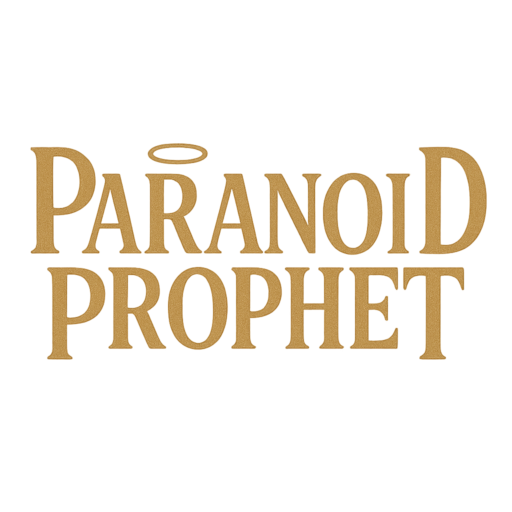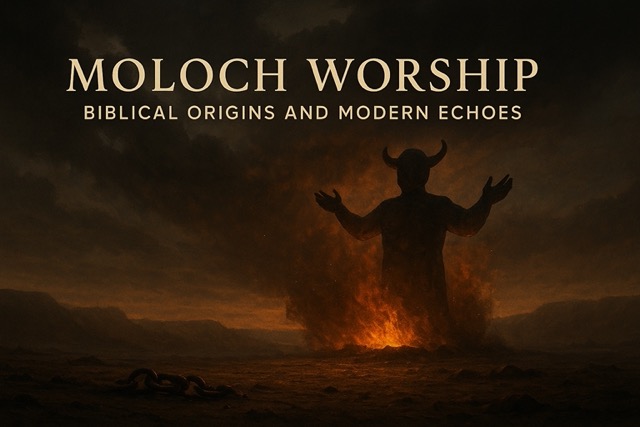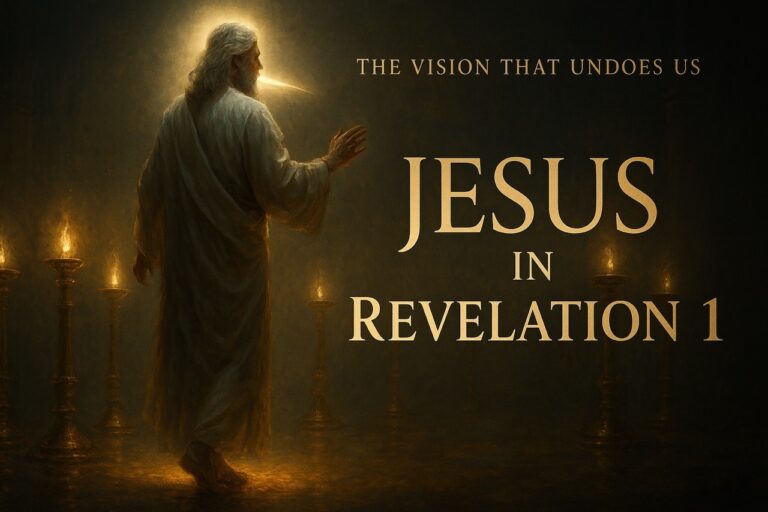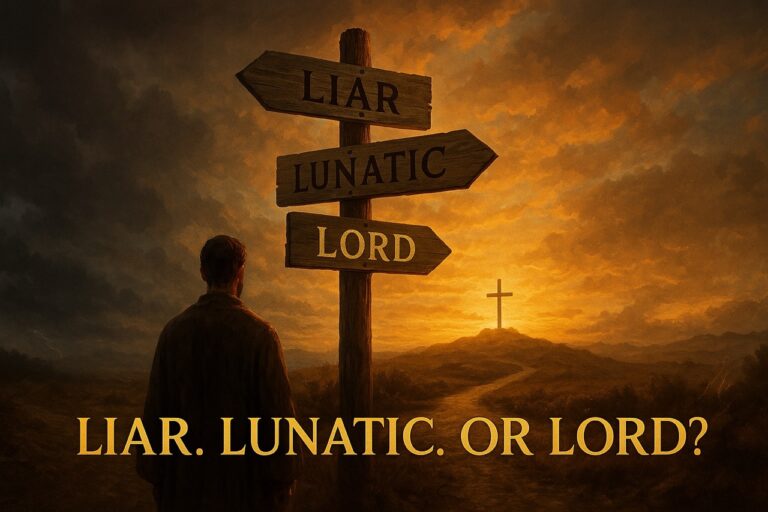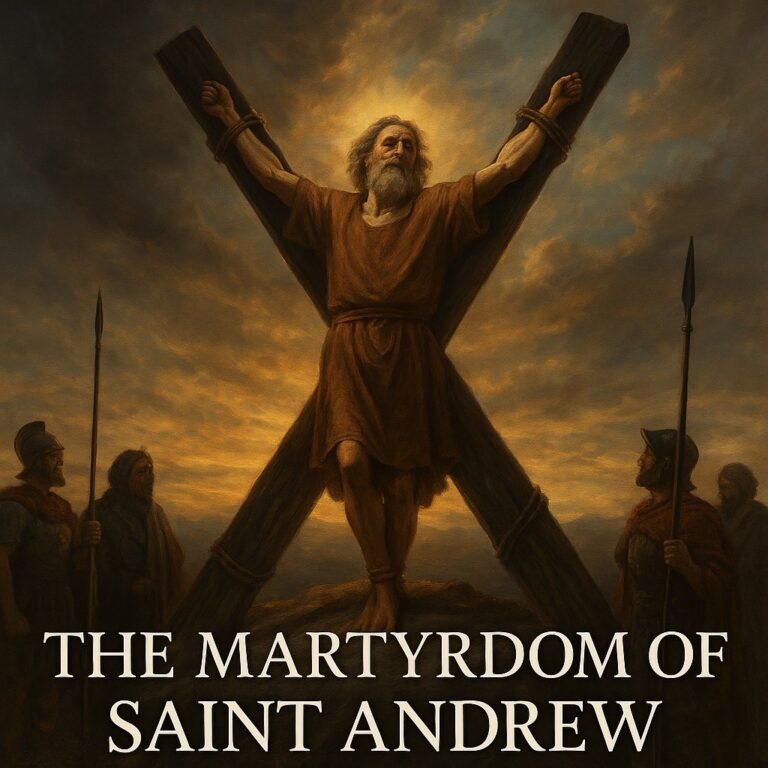Moloch Worship in the Bible and Modern Society: Meaning, History, and Parallels
Moloch worship — a name forever linked to child sacrifice, greed, and rebellion against God’s law — stands among the darkest chapters of human history. Once revered in ancient Canaanite and Phoenician cultures, the rituals surrounding Moloch centered on horrifying sacrifices to false idols. Yet the spirit of Moloch, defined by selfish ambition and exploitation of the vulnerable, still haunts modern society today.
In this study, we’ll explore the biblical references to Moloch worship, the chilling historical practices, and the disturbing ways that the “spirit of Moloch” continues to manifest in today’s world.
What Is Moloch Worship? (Biblical Overview)
Moloch appears in several key biblical passages, where his worship is unequivocally condemned as an abomination before God:
Leviticus 18:21:
“You shall not give any of your children to offer them to Moloch, and so profane the name of your God: I am the LORD.”
This command reflects God’s prohibition against child sacrifice, symbolizing ultimate rebellion against His moral law.
Leviticus 20:2-5:
“Any Israelite or any foreigner residing in Israel who sacrifices any of his children to Moloch is to be put to death. The members of the community are to stone him.”
The severity of the punishment highlights how seriously God viewed this offense.
2 Kings 23:10:
King Josiah defiled Topheth in the Valley of Hinnom to prevent further sacrifices to Moloch. This site later became synonymous with “Gehenna,” a metaphor for divine judgment.
Acts 7:43:
In Stephen’s speech before his martyrdom, he references Moloch, quoting Amos 5:26. This highlights Israel’s recurring struggle with idolatry.
Ancient Practices of Moloch Worship
Moloch worship was rooted in the pagan traditions of the Canaanites and Phoenicians. It embodied the ultimate transactional relationship: sacrificing life to gain favor, prosperity, or protection.
Child Sacrifice Rituals and Fire Idolatry
Historical accounts describe Moloch’s idol as a hollow bronze figure heated by fire. Children were placed into its outstretched arms or thrown into the flames as offerings — a gruesome ritual intended to secure divine favor.
How Moloch Worship Spread Across Ancient Cultures
Moreover, Moloch worship spread beyond Canaan, influencing neighboring civilizations, including the Phoenicians and Carthaginians. Archaeological evidence, such as the Tophet burial sites in Carthage, suggests widespread practices of child sacrifice.
Symbol of Rebellion
For Israel, adopting Moloch worship symbolized a profound rejection of God’s covenant, aligning themselves spiritually and politically with foreign, idolatrous nations.
Modern Echoes of Moloch Worship in Society
While few today bow before a bronze idol, the spirit of Moloch persists whenever the vulnerable are sacrificed for personal or systemic gain.
Corporate Greed and Systemic Exploitation
Corporate Greed:
Large corporations often prioritize profits over human welfare, engaging in exploitative practices like child labor and environmental destruction. These modern sacrifices echo the transactional horrors of Moloch worship.
Consumer Culture:
An obsessive pursuit of wealth and materialism frequently leads individuals to sacrifice relationships, integrity, and mental health — trading the priceless for the perishable.
Elites and Systemic Sacrifice
Political Corruption:
Policies that neglect the poor and favor the elite mirror ancient practices of sacrificing the weak to maintain power.
Human Trafficking:
The exploitation and commodification of children in human trafficking reflect chilling parallels to ancient child sacrifices.
Everyday Complicity
Abortion and Ethical Questions:
While complex and nuanced, debates around abortion often center on the tension between self-interest and the sanctity of life.
Entertainment and Media:
By idolizing figures who embody greed and excess, society mirrors Moloch’s spirit, glamorizing exploitation and self-indulgence.
Moloch as a Symbol of Greed and Oppression
Moloch has become a powerful metaphor in literature and philosophy for systems that demand immense human sacrifices.
Literature
In Allen Ginsberg’s “Howl,” Moloch represents industrial capitalism’s dehumanizing effects — the machine devouring souls for profit.
Conspiracy Theories
Moloch features prominently in conspiracy theories, representing elites allegedly engaging in symbolic or literal acts of exploitation. While often speculative, these theories express real fears about systemic corruption.
Symbol of Industrial Capitalism
Moloch symbolizes societies where profit is prized above people, illustrating the moral bankruptcy of systems prioritizing material gain over human dignity.
Resisting the Spirit of Moloch Today
To resist Moloch’s enduring influence, individuals and societies must uphold values that honor life and protect the vulnerable.
Moral Accountability:
Demand transparency and justice from leaders, corporations, and institutions.
Community Engagement:
Support initiatives that aid the marginalized, such as charities, ethical businesses, and advocacy groups.
Spiritual Renewal:
Return to principles of justice, compassion, humility, and sanctity of life rooted in God’s truth.
Protecting the Vulnerable:
Upholding the dignity of every human life directly counters the spirit of exploitation.
Practical Steps:
Advocate for fair policies, practice ethical consumption, and foster a culture of compassion and accountability.
Conclusion
Moloch, the ancient deity of child sacrifice and greed, may no longer have physical altars — but his spirit endures wherever power, profit, and personal ambition triumph over human dignity. By recognizing these modern parallels and actively resisting them through moral accountability, community engagement, and spiritual renewal, we can break free from the influence of Moloch and build a society rooted in justice, compassion, and the sanctity of life.
Sources
- Who Was Moloch? Story and Meaning – Christianity.com
- At Carthage, Child Sacrifice? – Biblical Archaeology Society
- Molekh: The Sacrifice of Babies – TheTorah.com
- Ancient Carthaginians and Child Sacrifice Confirmed – University of Oxford
- Bible Verses About Molech – Bible Study Tools
FAQ
Biblical Context of Moloch Worship
What does the Bible say about Moloch worship?
The Bible condemns Moloch worship, particularly for its association with child sacrifice (Leviticus 18:21, 20:2-5).
Why was child sacrifice condemned in the Old Testament?
Because it violated the sanctity of life, symbolizing ultimate rebellion against God.
Where is Moloch mentioned in the Bible?
Passages include Leviticus 18:21, Leviticus 20:2-5, 2 Kings 23:10, and Acts 7:43.
How did King Josiah end Moloch worship?
He defiled Topheth, preventing further sacrifices, as part of his religious reforms.
What does Acts 7:43 teach about Moloch worship?
Stephen rebukes Israel for turning to idolatry, quoting Amos 5:26.
Historical Practices of Moloch Worship
Who worshiped Moloch?
Primarily the Canaanites and Phoenicians.
What rituals were involved?
Sacrificing children by fire to gain favor from Moloch.
Is there archaeological evidence?
Yes, especially at Carthaginian Tophet sites.
What was the Tophet’s role?
It served as a ceremonial site for child sacrifices.
How did Moloch worship spread?
Through cultural and religious influence across the ancient Mediterranean.
Modern Parallels to Moloch Worship
How does corporate greed reflect Moloch worship?
By prioritizing profit over human life and dignity.
How do political elites sacrifice the vulnerable?
By making decisions that disproportionately harm marginalized groups.
Can consumerism reflect Moloch worship?
Yes, by idolizing wealth and sacrificing ethics and relationships.
How does child exploitation mirror ancient sacrifices?
Through modern trafficking and forced labor.
What are examples of systemic greed today?
Child labor, environmental destruction, and economic policies that exploit the vulnerable.
Moloch in Literature and Symbolism
How is Moloch portrayed in literature?
As a symbol of greed, oppression, and societal decay.
What does Ginsberg’s Howl say about Moloch?
It depicts Moloch as a force devouring human souls through industrial capitalism.
Why is Moloch a modern symbol of oppression?
Because it reflects systems that sacrifice the weak for profit and power.
What role does Moloch play in conspiracy theories?
A symbol of elite corruption and systemic exploitation.
How does Moloch symbolize capitalism?
By illustrating profit-driven systems that devalue human life.
Resisting the Spirit of Moloch Today
How can individuals combat Moloch’s influence?
Support ethical businesses, advocate for justice, prioritize values over material gain.
Why is moral accountability crucial?
It challenges leaders and institutions to protect the vulnerable.
How can spiritual renewal help?
By fostering compassion, justice, and humility.
Why protect the vulnerable?
It reinforces the sanctity of life, opposing systems of exploitation.
What practical steps can create a just society?
Ethical consumption, policy advocacy, community engagement, and promoting moral values.
⭐ Want to explore more hidden truths of the Bible?
Visit our library of deep Bible studies at ParanoidProphet.com and discover how ancient wisdom speaks to our world today.
